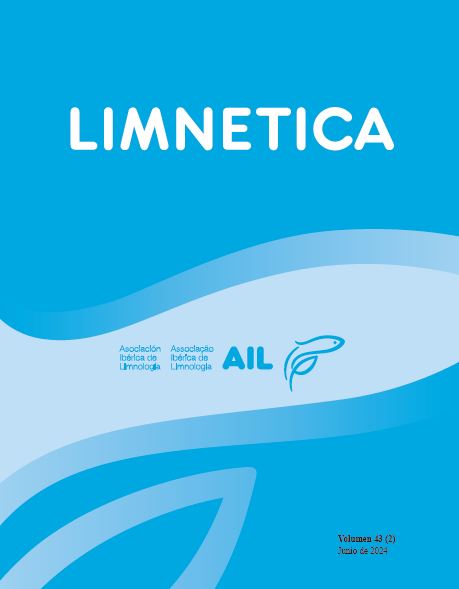Latitudinal and elevational gradients interact to determine the distribution of Iberian freshwater fish
Abstract
Unraveling the effects of latitudinal and elevational gradients on species distribution has been a central topic in ecology and biogeography for decades. However, few studies have evaluated the effects of the interaction between both gradients on species distribution. Hence, the main goal of this study was to evaluate such interaction using a regional dataset of ten Iberian freshwater fish species. For this purpose, we compiled occurrence data for the ten most widespread (i.e. present in more basins) inland, non-diadromous Iberian fishes. We used generalized linear models including elevation, latitude, their quadratic terms and the interaction between the two predictors as sources of variation. Results revealed contrasting distribution patterns across species and differing importance of the elevation and latitudinal gradients. Latitude was particularly important in explaining the distribution patterns of Salmo trutta and Gobio lozanoi, while the distribution of Gambusia holbrooki or Lepomis gibbosus was mainly mediated by elevation. We detected significant interaction between elevation and latitude for all studied species. Consequently, Iberian fish species occupy different elevational niche positions depending on the latitude. For example, Salmo trutta and Oncorhynchus mykiss can occupy intermediate and even lower reaches in the northernmost areas. By contrast, occurrence probability of both species decreases at lower latitudes, despite they can occur in elevated areas of these regions (e.g. Baetic Mountains). Finally, we discuss the potential effects of climate change on distribution patterns of the Iberian fish species studied.
Downloads
Published
Issue
Section
License
Authors publishing in the journal agree to the following terms
Limnetica is licensed under a Creative Commons Attribution-NonCommercial 4.0 International License.


